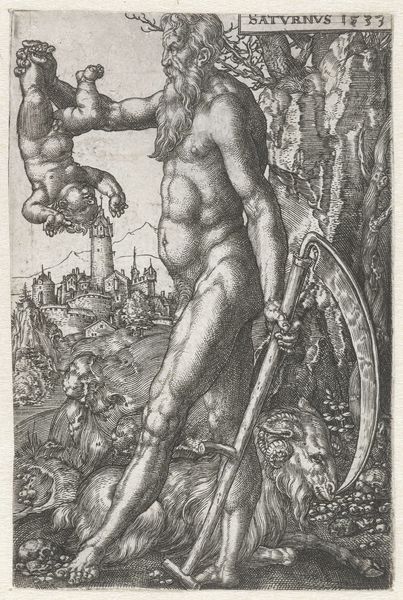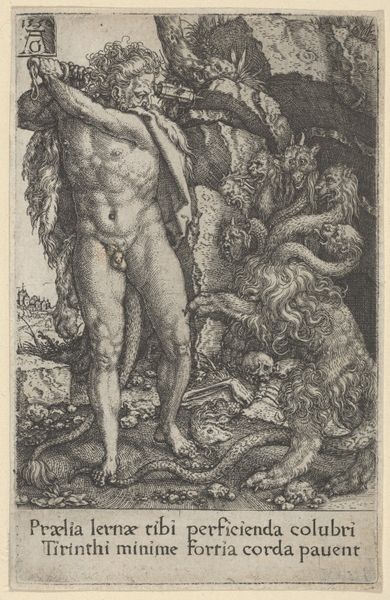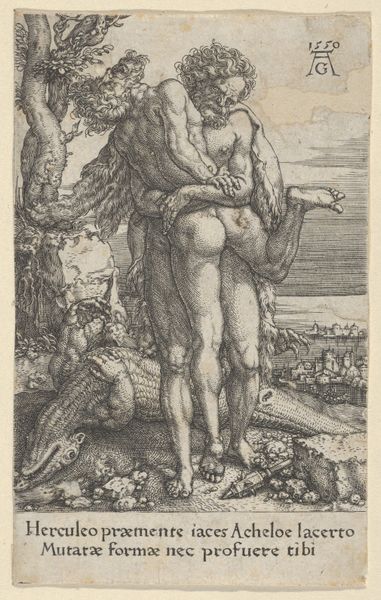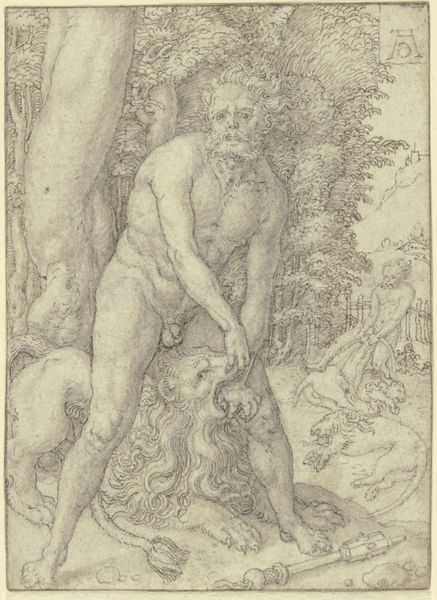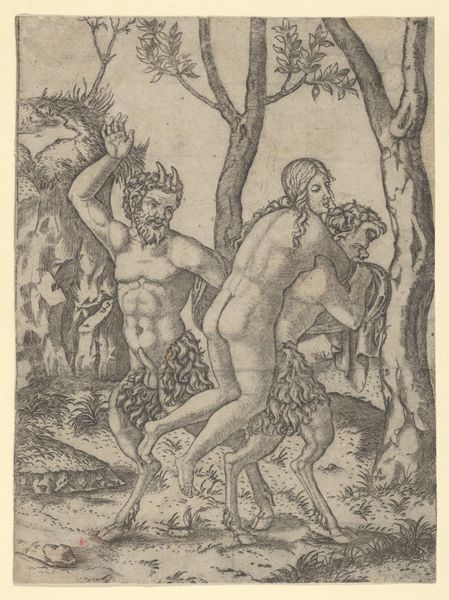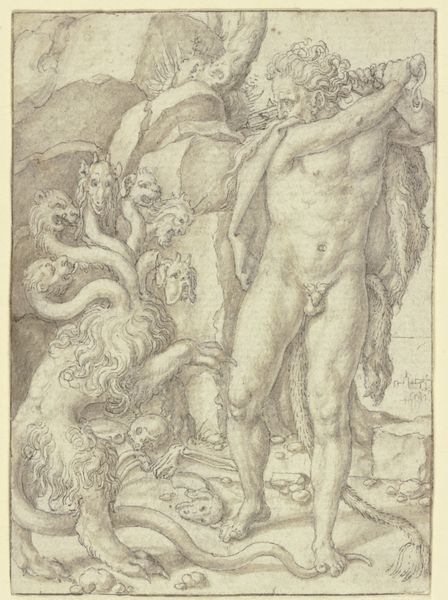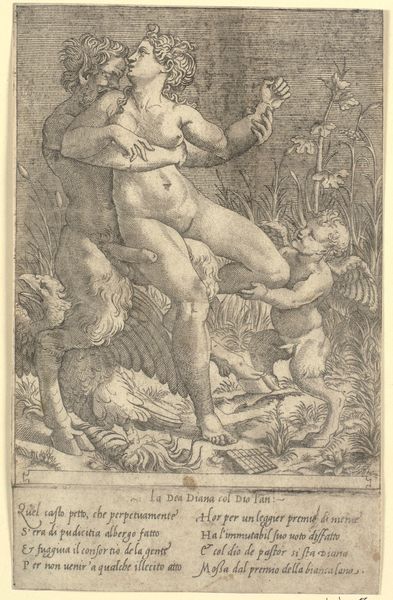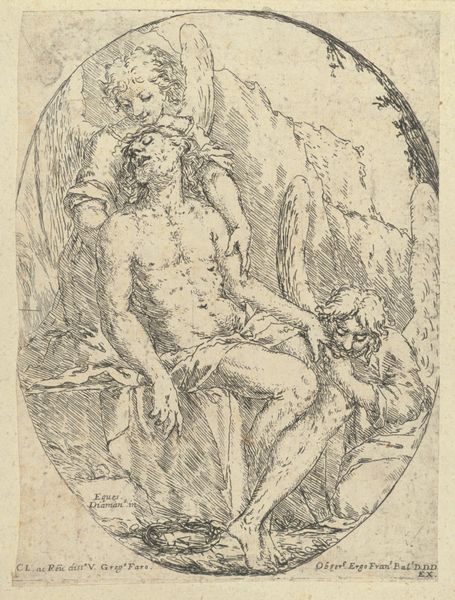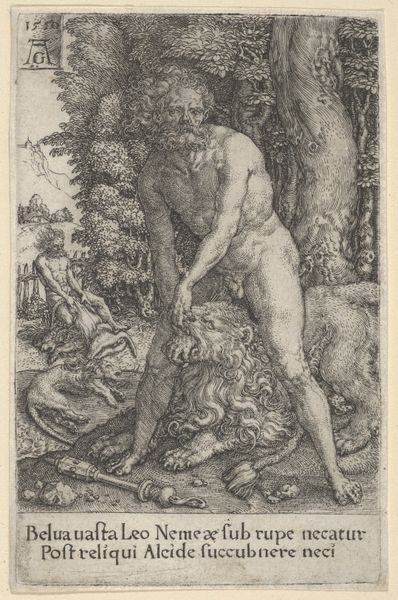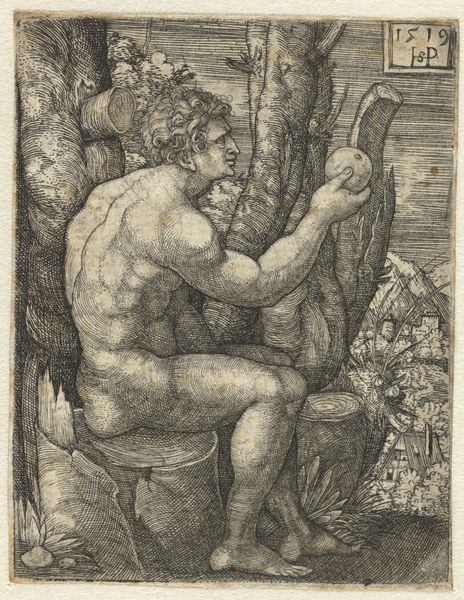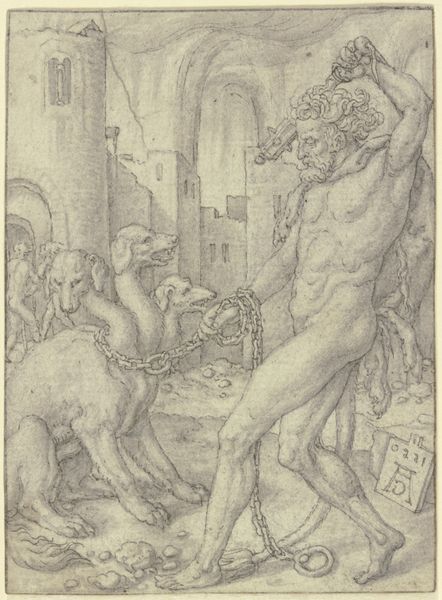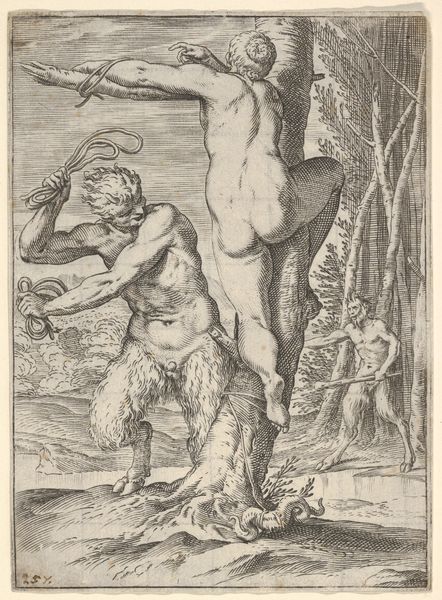
Saturn holding an Infant and a Scythe, from The Seven Planets 1533
0:00
0:00
drawing, print, ink, engraving
#
drawing
#
pen drawing
# print
#
figuration
#
11_renaissance
#
ink
#
history-painting
#
northern-renaissance
#
engraving
Dimensions: Sheet: 3 7/8 x 2 9/16 in. (9.9 x 6.5 cm)
Copyright: Public Domain
Editor: This engraving, "Saturn Holding an Infant and a Scythe," was created in 1533 by Heinrich Aldegrever. It’s a rather unsettling image – the figure of Saturn looming large and menacing. What do you see in this piece? Curator: Aldegrever’s work reflects the complex social anxieties of the 16th century. Consider how Saturn, often associated with melancholy and destruction, is depicted. He stands in stark contrast to the image of a defenseless infant. What impact do you think the printing press, still a relatively new technology at the time, had on how people perceived these traditional astrological symbols and their associated anxieties? Editor: That’s a great question. I guess wider circulation would mean more people were exposed to and influenced by such imagery. Do the details – like the townscape in the background or the animals – have symbolic weight? Curator: Absolutely. These elements speak to the perceived influence of Saturn on worldly affairs. The crumbling ruins can be seen to represent decay and the ephemeral nature of earthly power. Aldegrever positions Saturn as not merely a mythological figure, but an active force in human society. Editor: So, this wasn’t just a depiction of mythology; it was a commentary on society at the time. A pretty bleak one! Curator: Exactly! It prompts us to think about the public role of art in reflecting and shaping societal anxieties, about power, death, and the perceived futility of earthly endeavors, anxieties heightened perhaps, by the religious and social upheavals of the Reformation. How the artist, through distributing printed imagery, inserts himself in these polemics is itself a potent act. Editor: This engraving feels so much more complex now. It's not just a representation of Saturn, but a reflection of a world in flux. Thanks for shining a light on the socio-historical background of this image. Curator: Indeed. Analyzing art through its historical context allows us to understand how it reflects, shapes, and is shaped by society. It certainly is a bleak, but intriguing artwork.
Comments
No comments
Be the first to comment and join the conversation on the ultimate creative platform.
